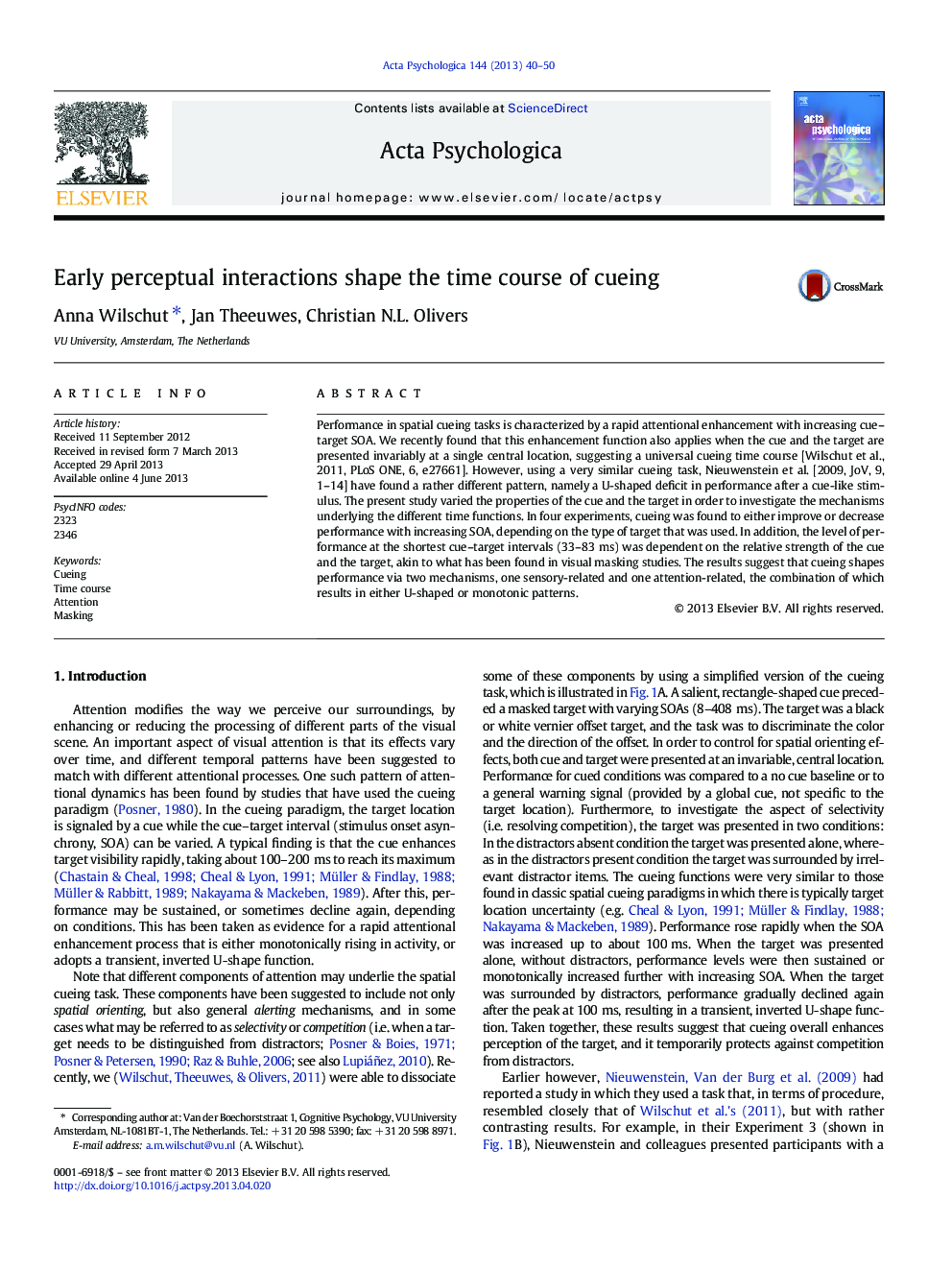| کد مقاله | کد نشریه | سال انتشار | مقاله انگلیسی | نسخه تمام متن |
|---|---|---|---|---|
| 919900 | 920248 | 2013 | 11 صفحه PDF | دانلود رایگان |

• Two recent studies suggest opposing effects of cueing on target discrimination.
• We found that cue-target properties underlie the differences between studies.
• The time course of cueing is determined by stimulus interactions and attention.
Performance in spatial cueing tasks is characterized by a rapid attentional enhancement with increasing cue–target SOA. We recently found that this enhancement function also applies when the cue and the target are presented invariably at a single central location, suggesting a universal cueing time course [Wilschut et al., 2011, PLoS ONE, 6, e27661]. However, using a very similar cueing task, Nieuwenstein et al. [2009, JoV, 9, 1–14] have found a rather different pattern, namely a U-shaped deficit in performance after a cue-like stimulus. The present study varied the properties of the cue and the target in order to investigate the mechanisms underlying the different time functions. In four experiments, cueing was found to either improve or decrease performance with increasing SOA, depending on the type of target that was used. In addition, the level of performance at the shortest cue–target intervals (33–83 ms) was dependent on the relative strength of the cue and the target, akin to what has been found in visual masking studies. The results suggest that cueing shapes performance via two mechanisms, one sensory-related and one attention-related, the combination of which results in either U-shaped or monotonic patterns.
Journal: Acta Psychologica - Volume 144, Issue 1, September 2013, Pages 40–50